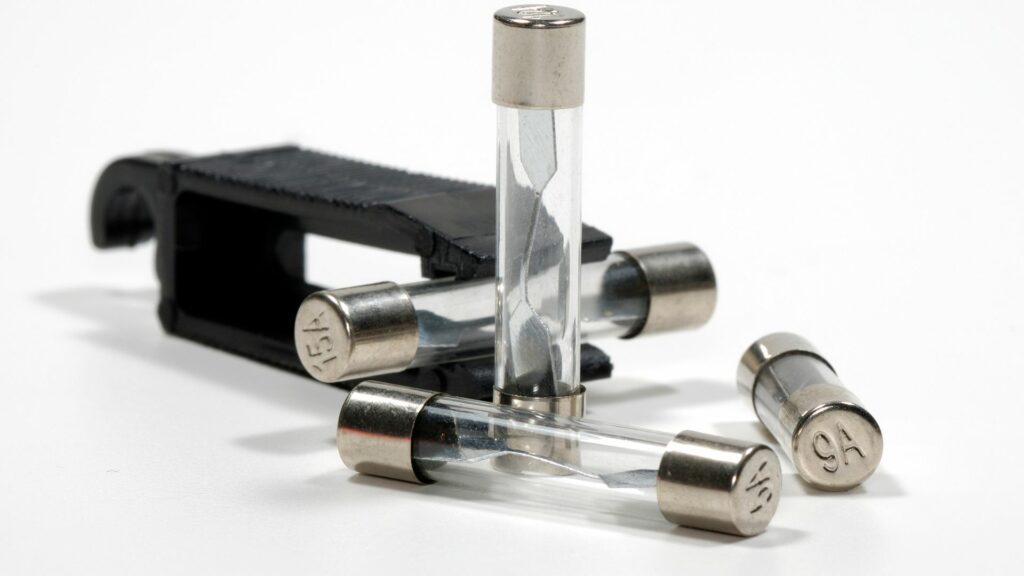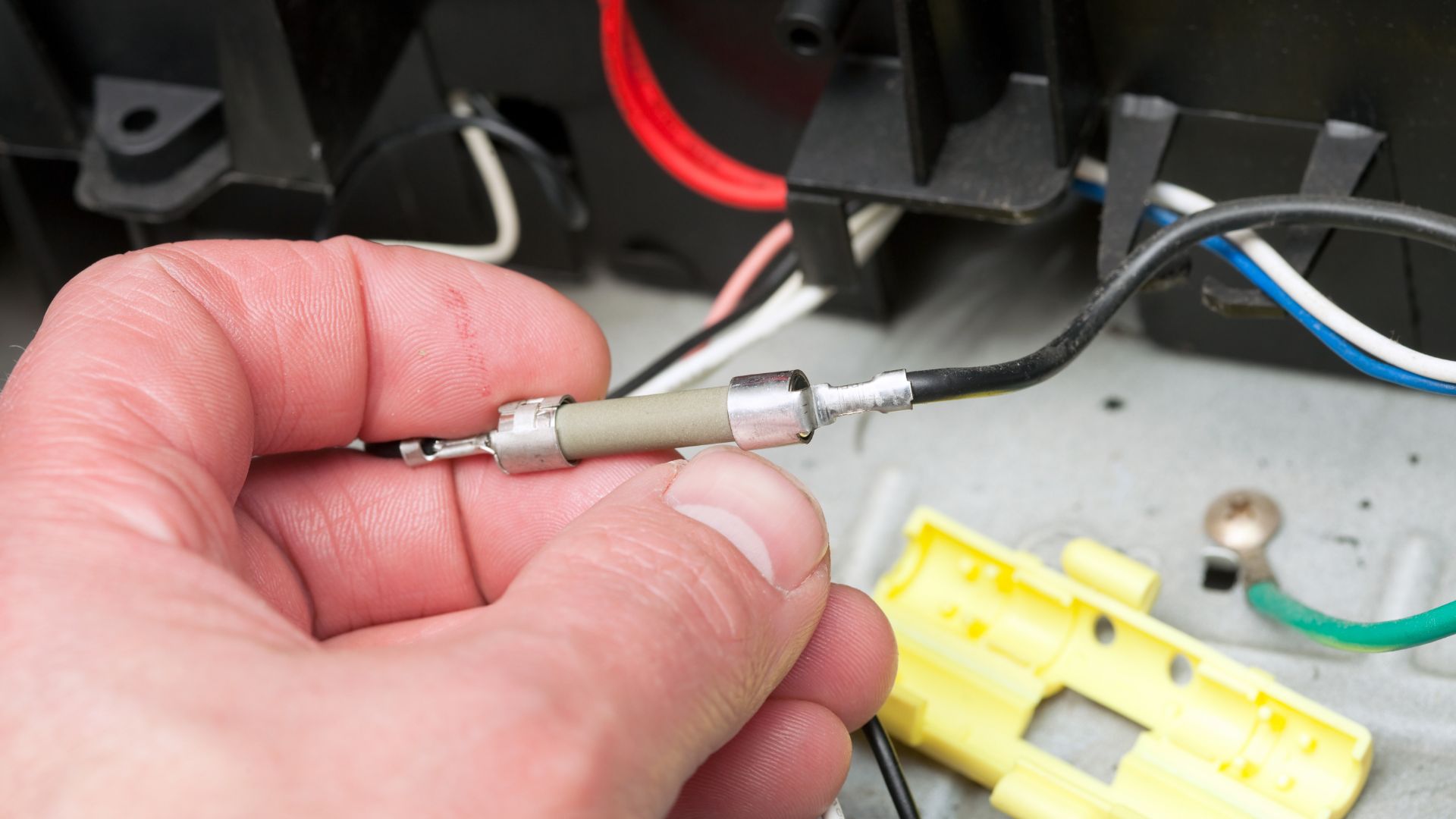Every microwave has a fuse that protects you from harm. But what do you do when that fuse blows? Can you replace it with any fuse you come across? This guide will tell you.
Can I Use Any 20 Amp Fuse For my Microwave?
No, you can’t because fuses are wide-ranging. The wrong fuse will leave you vulnerable. If you’re lucky, it will blow earlier than expected, cutting the power even when nothing goes wrong. If you’re unfortunate, the fuse won’t respond at all. It will let the current overwhelm the microwave, destroying it and starting a fire.
Consider the following:
1). Function
The fuse is a weak link. It has an element that melts quickly when exposed to high volumes of current. This is a good thing because it interrupts the flow of electricity, shutting the microwave down and protecting the appliance from surges.
The fuse will also prevent fires. Despite what some people think, fuses are not new. According to eHow, this technology appeared in 1890, the brain-child of Thomas Edison. It has undergone numerous transformations over the centuries. Today, you can trust the average fuse to keep you and your equipment safe.
2). Response Time
Fuses don’t respond to excess current at the same pace. Some fuses are fast-acting. They blow quickly, which is good because it allows the devices to kill the power before a current can harm the microwave. Others are slow. You also have semi-delay, time-delay, and slow-blow fuses.
Some people think the fastest response is the best, but that is not true. For instance, some appliances have a higher starting wattage. Their electrical requirements multiply significantly when they start.
But then the electrical draw stabilizes after a few seconds. The fastest fuses will blow in response to the starting wattage. They can’t handle that initial surge. They will respond to it the same way they would to a destructive surge, which is an inconvenience because the fuse will blow whenever you start the appliance.
You should match the response time to your microwave’s electrical demands. Otherwise, the fuse will become a nuisance.
3). Material
Don’t be so quick to replace a 20A ceramic fuse with its glass counterpart. Manufacturers use various materials to make fuses. The structure is the same. You have a barrel-shaped body with terminals.
Some fuses have one wire. Others have multiple wires. You may find substances like sand inside the barrel body. While you can find plastic and fiberglass fuses on the market, most consumers tend to prioritize ceramic and glass options.
The glass fuse has a visible element, which is appealing because you can inspect the fuse’s state with relative ease. Ceramic fuses have an opaque body.
But why does your selection here matter? Surely, they both perform the same function. That conclusion is not wrong. However, glass fuses are more delicate. They rapture easily. You shouldn’t pair them with heavy-duty microwaves boasting the highest amperage and voltage ratings.
Ceramic fuses are the opposite. They have a high rupturing capacity. Ceramic fuses offer superior thermal stability that allows them to tolerate higher temperatures. They won’t crack like their glass counterparts.
This is why experts allow consumers to replace glass with ceramic fuses, but they don’t want you to replace ceramic with glass fuses. You can ignore their advice. Your microwave will still work. But the glass fuse may blow even when the machine’s electrical draw is within the acceptable range.
Hunker likes ceramic fuses with sand because they combat the conductive film you usually see when the element melts because of a short circuit.
4). Type
Make sure you replace the correct fuse type. Some fuses respond to electricity. They blow when the current exceeds the threshold the fuse was designed to tolerate. But you also have thermal fuses. They respond to excess heat.
As you can see, it is unwise to replace your microwave’s 20-amp fuse with any random fuse you encounter. You have several variables to consider. If you have doubts, check the manual. Follow the manufacturer’s instructions. They will recommend a fuse type.
How Do I Know What Amp Fuse I Need For Microwave?

The fuse has a wire that overheats and melts when exposed to excess current. This kills the power before the surge can cause harm. However, the fuse will only respond as expected if you select the correct size.
It is common practice to pair microwaves with 20A fuses. Even when you have a 15A circuit, you will still find a 20A fuse in the microwave. But if you’re tempted to select a different amp rating, follow these steps:
1). Find the microwave’s wattage. You need to know the machine’s amps. But the manufacturer uses watts to represent the microwave’s electrical draw. Find the label that provides this information. If your device doesn’t have a label, check the manual.
2). Once you know the microwave’s wattage, divide it by the voltage to get the amperage. The microwave’s amperage will show you the fuse’s amps. For instance, you can install a 10A fuse in a 7-amp microwave. You don’t want a fuse with a smaller amp rating than the device it should protect.
3). Again, it isn’t enough to identify the amps. You must determine the type, material, and response time you want. In the absence of a manual to guide you, talk to an expert. They have enough experience to recommend a suitable fuse type.
What If I Use a Larger Fuse For Microwave?
You don’t want to use a bigger fuse for the microwave, especially if you’re replacing a smaller fuse. The fuse is supposed to blow when it encounters excess current. The element is weak enough to melt in response to a surge.
If all goes well, the fuse will disrupt the circuit before the surge reaches the appliances. What happens when you get a bigger fuse? The fuse will probably blow all the same. But it will allow a lot of electricity to pass before it responds. In other words, a fire may start even though the fuse blew.
A bigger fuse defeats the purpose of adding this technology to your microwave. Naturally, you want a bigger fuse than the microwave’s rating. For instance, adding a 10A fuse to a 7A machine makes sense. But the fuse shouldn’t be so large that it permits large volumes of current to damage the microwave.
What About Using A Smaller Fuse For The Microwave?
If you must choose between a bigger or smaller fuse, choose the smaller fuse. The smaller fuse is a nuisance because it will blow continuously, preventing you from using the microwave. It is worth noting that fuses don’t always blow.
A fuse can stop working simply because you’ve had it for too long and the fuse is degraded. You can test it with a multimeter. Readings of 0 to 5 ohms are good.
You can tell that a fuse blew instead of degrading by looking at the melted element. Fuses can repeatedly blow because of a malfunction. But before you tear the machine apart in search of a fault, start by checking the rating.
If the fuse has a smaller amp rating than the microwave, the amp rating is the problem, not the microwave.
Related Post:

